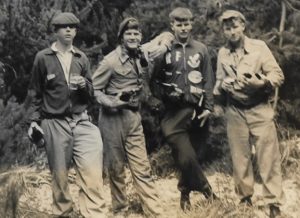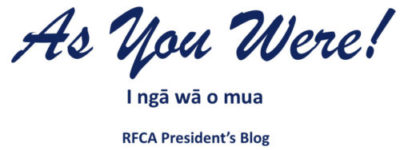
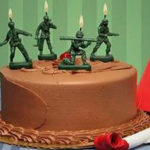 Greetings fellow Clubbies. Well here we are, nearly halfway through 2020 but who knows how far through the Covid 19 pandemic. The good news is that we can start bending our arms in the company of others again, so if you haven’t been using it, dust the rust off the preferred drinking elbow in preparation for celebrating the birthday of the RF Cadet School’s official formation – 15 July 1948.
Greetings fellow Clubbies. Well here we are, nearly halfway through 2020 but who knows how far through the Covid 19 pandemic. The good news is that we can start bending our arms in the company of others again, so if you haven’t been using it, dust the rust off the preferred drinking elbow in preparation for celebrating the birthday of the RF Cadet School’s official formation – 15 July 1948.
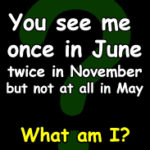 Joys of June
Joys of June
I had a look at our School history book (A Favoured Few) to see what was happening in June to prepare for this momentous occasion and found that “Applications for the new School were called for in early 1948, and the 90 successful applicants were advised of their selection by the end of June.” I can only imagine how the RF staff must have been working like cut cats during this month to get the new Trentham-based unit ready for its first intake.
The following is some trivia about June that might stand you in good stead should you happen to go to a quiz night this month:
June is the sixth month of the year in the Julian and Gregorian calendars, the second of four months to have a length of 30 days, and the third of five months to have a length of less than 31 days.
I also took a look at the School year books for 1964, ‘65, and ‘66 (when I was a Clubbie) to see what was going on in June. A winter sports trip to Taumaranui High took place in all three years. In ’64 there was also a sports visit to the Police Training School. ‘66 saw a visit of St Stephens 1st and 2nd XVs.
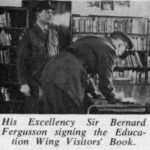 RF Cadet School was very popular in June ’65. There was a Queen’s Birthday Parade in Masterton and on 17 June, Governor-General, His Excellency Sir Bernard Fergusson, visited the Education Wing (see photo with Maj Norm Skilton standing alongside the Governor-General). Five days later, a Quarter-Guard for Admiral Sir Peter Phipps was mounted, followed by him inspecting the barracks. We poor clubbies were terribly exhausted from all the brass polishing (see ‘Military Arts’ below) for inspections by the top brass.
RF Cadet School was very popular in June ’65. There was a Queen’s Birthday Parade in Masterton and on 17 June, Governor-General, His Excellency Sir Bernard Fergusson, visited the Education Wing (see photo with Maj Norm Skilton standing alongside the Governor-General). Five days later, a Quarter-Guard for Admiral Sir Peter Phipps was mounted, followed by him inspecting the barracks. We poor clubbies were terribly exhausted from all the brass polishing (see ‘Military Arts’ below) for inspections by the top brass.
My ‘65 diary tells me it rained and snowed a lot in June and the parade ground was iced over a few times so inside inspections were all the rage.
Sir Bernard Fergusson, GCMG, GCVO, DSO, OBE – and Chindit
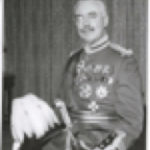 Reading about the visit by the Governor-General in 1965 sparked some memories. Back then, I had more than a few boyish prejudices about upper-class Brits who wore monocles. It wasn’t until 10 year’s later when I was Camp Education Officer at Linton and had to help young officers prepare for their military history promotion exams that I realised what an accomplished and real soldier Sir Bernard was. The curriculum for the exam that year included the Burma Campaign in WWII and, because I didn’t know much military history myself, I had to “swot up” on it so I could at least keep one page ahead, as the saying goes in the teaching world.
Reading about the visit by the Governor-General in 1965 sparked some memories. Back then, I had more than a few boyish prejudices about upper-class Brits who wore monocles. It wasn’t until 10 year’s later when I was Camp Education Officer at Linton and had to help young officers prepare for their military history promotion exams that I realised what an accomplished and real soldier Sir Bernard was. The curriculum for the exam that year included the Burma Campaign in WWII and, because I didn’t know much military history myself, I had to “swot up” on it so I could at least keep one page ahead, as the saying goes in the teaching world.
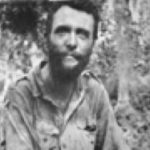 It wasn’t long before I learnt about the Chindits, a long-range, deep penetration group which marched into Burma and operated behind Japanese lines. I also found out that Sir Bernard commanded one of the Chindit columns. While the impact of the 3,000 strong Chindit formation on the outcome of the Burma campaign was negligible (the Japanese had repaired all railway lines blown up by the Chindits within 4 weeks), the boost to British Army morale was significant. After the debacle of Malaya and Singapore, they had shown that they could fight the Japanese using jungle warfare.
It wasn’t long before I learnt about the Chindits, a long-range, deep penetration group which marched into Burma and operated behind Japanese lines. I also found out that Sir Bernard commanded one of the Chindit columns. While the impact of the 3,000 strong Chindit formation on the outcome of the Burma campaign was negligible (the Japanese had repaired all railway lines blown up by the Chindits within 4 weeks), the boost to British Army morale was significant. After the debacle of Malaya and Singapore, they had shown that they could fight the Japanese using jungle warfare.
Wikipedia summarises Sir Bernard’s military career as follows:
Fergusson was educated at Eton College and the Royal Military College, Sandhurst. From the latter, he was commissioned as a second lieutenant into the Black Watch on 27 August 1931. He was promoted to lieutenant on 27 August 1934. He served with the 2nd Battalion of his regiment in the British Mandate of Palestine during the Arab revolt and later became aide-de-camp (ADC) to Major General Archibald Wavell, then General Officer Commanding of the 2nd Infantry Division in England, on 11 March 1937. In October 1937, he was on secondment to the Green Howards. Fergusson was promoted to captain on 27 August 1939, only a few days before the outbreak of the Second World War. In 1940, Fergusson was serving as a brigade major for the 46th Infantry Brigade before becoming a general staff officer in the Middle East. In October 1943 he was promoted to acting brigadier and given command of the 16th Infantry Brigade, which was converted into a Chindit formation for operations in the deep jungles of Burma miles behind Japanese lines. He commanded this brigade throughout the Chindit operations of 1944 before becoming Director of Combined Operations from 1945 to 1946. He ended the war as a major (war-substantive lieutenant-colonel). After the war, Fergusson held various positions, including command of the 1st Battalion, Black Watch.
Fergusson was appointed Governor-General of New Zealand in 1962, serving until 1967. His family’s association with New Zealand spanned several generations – his father Sir Charles Fergusson had also been governor-general, and both of his grandfathers, Sir James Fergusson, 6th Baronet and David Boyle, 7th Earl of Glasgow, had been Governors of New Zealand.
He married Laura Margaret Grenfell in 1950 and they had one child, Hon George Duncan Raukawa Fergusson (born 30 September 1955) who served as British High Commissioner to New Zealand from 2006 to 2010.
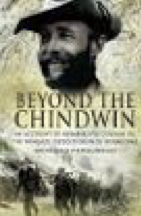
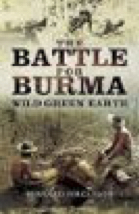 He also authored a number of books, at least two of which relate his experiences in Burma (you might be able to get them online or at your local library).
He also authored a number of books, at least two of which relate his experiences in Burma (you might be able to get them online or at your local library).
Tribute – One of our own
Steve Corry, Andrew Class – adventurer and Nelson Mandela operative
This tribute was written by Kerry Adkins, Andrew Class, who was friends with Steve for 50 years. Thanks Kerry.
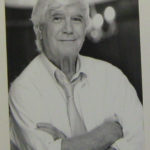 I met Steve on the train from Auckland to Waiouru, 12 January 1966, as we marched into Cadets . Steve’s parents had both fought in WW 2 and at this time, his father was the Manager of the Ranfurly War Veterans Home in Mt Albert. We both signed up as apprentice chefs. During our service, Steve and I were seconded to work at Government House for the Governor General, Sir Arthur Porritt (Ed: who succeeded Sir Bernard Fergusson as the first NZ-born Governor-General), for 6 months. We had also been assigned to the THC hotels for 6 months external training. Steve was at Lake Te Anau THC (Tourist Hotel Corporation) along with Errol Blocksage from Wellington. I was at Lake Wanaka.
I met Steve on the train from Auckland to Waiouru, 12 January 1966, as we marched into Cadets . Steve’s parents had both fought in WW 2 and at this time, his father was the Manager of the Ranfurly War Veterans Home in Mt Albert. We both signed up as apprentice chefs. During our service, Steve and I were seconded to work at Government House for the Governor General, Sir Arthur Porritt (Ed: who succeeded Sir Bernard Fergusson as the first NZ-born Governor-General), for 6 months. We had also been assigned to the THC hotels for 6 months external training. Steve was at Lake Te Anau THC (Tourist Hotel Corporation) along with Errol Blocksage from Wellington. I was at Lake Wanaka.
Cadets R.A. Clarke, Steve Corry, Kerry Adkins, Lindsay Clarke – with beer somewhere on Tank Hill
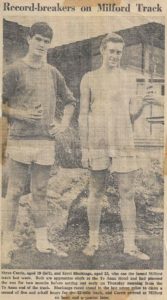 As Te Anau was the start of the Milford track, Steve and Errol decided to run its 32 km length. They approached the Milford track authorities for permission but it was not granted. Steve and Errol knew the boat captain and he was prepared to stow them on board undercover. As the boat arrived at the start of the Milford track, they jumped off and began their run. They had to use the boats to cross a couple of the rivers and the boating crew were happy to provide their assistance. Unfortunately for Steve, someone offered him a couple of cans of beer which he was grateful for. Errol knew better and stayed off it. In the end, Errol finished in around 5 ½ hours, with Steve 90 minutes behind him. Errol set the record for the fastest run but it was beaten a few years ago. (Photo – Steve [left] and Errol)
As Te Anau was the start of the Milford track, Steve and Errol decided to run its 32 km length. They approached the Milford track authorities for permission but it was not granted. Steve and Errol knew the boat captain and he was prepared to stow them on board undercover. As the boat arrived at the start of the Milford track, they jumped off and began their run. They had to use the boats to cross a couple of the rivers and the boating crew were happy to provide their assistance. Unfortunately for Steve, someone offered him a couple of cans of beer which he was grateful for. Errol knew better and stayed off it. In the end, Errol finished in around 5 ½ hours, with Steve 90 minutes behind him. Errol set the record for the fastest run but it was beaten a few years ago. (Photo – Steve [left] and Errol)
At the end of our 8 year’s Army service (1973), we departed to do our OE in the UK. We ended up as driver/courier for tours through Europe, Scandinavia, the Soviet Union, East Germany etc. Within the first year we were doing Scandinavia through to the Soviet Union, back through East Berlin, West Germany and back to London. We caught on very early that Norway and Sweden had a great appetite for Johnny Walker Whisky. The Soviet Union wanted Levi jeans and we wanted Russian Icons along with other items. So, we purchased 20 dozen bottles of duty free on the ferry from Dover to Zeebrugge in Belgium at GDP 2.00 a bottle and sold them to Norwegians in the Fjords for GDP 12.00 a bottle. GDP 2,400 pounds in our pockets (1974) was good money. We were being paid by the tour company GDP 60.00 pounds a week.
![]() Before we departed London, we purchased 100 pairs of Levi jeans at GDP 5.00 pounds a pair and we traded these with Joseph, a Russian Jew based in Leningrad, as it was then, for Russian Icons which had been ripped off church walls and traded for the jeans. We wrapped the icons in sponge rubber and inserted them between the inside lining and the outer skin of the coach. We played good cop/bad cop to get the best deal and in time there was a great deal of trust between the 3 of us. We sold our icons through Sotheby’s in London to get our money back. (Photo: Icons – traded for jeans by Soviet Union citizenry)
Before we departed London, we purchased 100 pairs of Levi jeans at GDP 5.00 pounds a pair and we traded these with Joseph, a Russian Jew based in Leningrad, as it was then, for Russian Icons which had been ripped off church walls and traded for the jeans. We wrapped the icons in sponge rubber and inserted them between the inside lining and the outer skin of the coach. We played good cop/bad cop to get the best deal and in time there was a great deal of trust between the 3 of us. We sold our icons through Sotheby’s in London to get our money back. (Photo: Icons – traded for jeans by Soviet Union citizenry)
In Moscow, we traded sticks of chewing gum for the Soviet Army belts or the Soviet Navy belts. Plus, we bought Soviet white rabbit fur snow hats for a dollar, put a Soviet Army badge on each one and we bundled the hat and belt together and sold them to the American and British troops in West Berlin for $US 50.00 a set. For a cost of $US 2.00 set, $48.00 was the cream on the top. Steve continued the hat and belt bundling on every trip he did, as we did not always do the same trips. On one occasion, the West Berlin police were called because he was selling Soviet goods inside West Berlin, then under American, UK and French control. He was taken to the West Berlin police station and held until he could explain his actions and not having a ‘Hawker’s Licence’. We joked that he could have been put into Spandau jail with Rudolph Hess who was the sole occupant of the jail.
The black market for currency at that time was rife and all the black marketeers in the Soviet Union wanted US dollars. So instead of getting 1 Rouble: $ US 1.00, we were getting 10 Roubles for $ US 1.00. We sold currency to our passengers so they had a bargain and all our company expenses were at the official rate. These trips were worth a small fortune and being duty free was even better. Getting caught was always likely and many times our butts clamped as Customs and Police came on board.
Steve and I married South African ladies and I worked for his father-in-law in Swaziland. We came back to NZ but Steve and Wendy decided to go back to South Africa. He started back in catering at one of the Universities in Johannesburg before going out on his own.
The ANC, then a terrorist group, was operating throughout South Africa and their leader, Nelson Mandela was in jail on Robyn Island off Cape Town. Steve got introduced to some of the leaders of the ANC and started catering for their meetings, which were illegal at that time. He also joined them in some of their nightly excursions disrupting the white-led SA Government. The ANC meetings became large with up to 2,000 members attending.
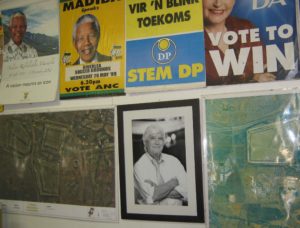 In February, 1990 Nelson Mandela, or Madiba as he was known, was released from gaol. At this time, with the size of the meetings and the requirement for accommodation, Steve paid Rand 2 Million (the South African Rand at that time was 1:1 with the NZ dollar) for an old gold mining site. It had accommodation similar to that of the old Papakura Camp. Steve established the accommodation, dining room, kitchen and then set about a training schedule for those ex ANC soldiers who had fought all their life but had no work skills. He set up construction training, block laying, carpentry, concreting and later started getting students to grow trees. Maimed or young people, who had not been able to attend school, were taught computers so that they could also get employment. Steve also set up Trans Siewe Security services so that the men were able to be employed initially and then transfer from one job to another. The security group looked after railways, shopping centres and trucks going into Soweto and around Johannesburg. (Photo of Steve in his conference room.)
In February, 1990 Nelson Mandela, or Madiba as he was known, was released from gaol. At this time, with the size of the meetings and the requirement for accommodation, Steve paid Rand 2 Million (the South African Rand at that time was 1:1 with the NZ dollar) for an old gold mining site. It had accommodation similar to that of the old Papakura Camp. Steve established the accommodation, dining room, kitchen and then set about a training schedule for those ex ANC soldiers who had fought all their life but had no work skills. He set up construction training, block laying, carpentry, concreting and later started getting students to grow trees. Maimed or young people, who had not been able to attend school, were taught computers so that they could also get employment. Steve also set up Trans Siewe Security services so that the men were able to be employed initially and then transfer from one job to another. The security group looked after railways, shopping centres and trucks going into Soweto and around Johannesburg. (Photo of Steve in his conference room.)
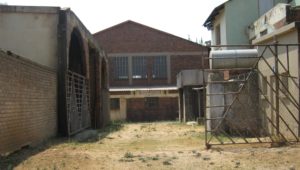 The entrance to the mine had not been blocked off and I am told it was a store space for rifles and ammunition for the ANC. It appears the police were vaguely aware of the storage but didn’t have any substance to base a search on. Possibly they were also aware that if they arrived in numbers, a shooting spree could begin. The rifles were being brought in on buses that were taking the working staff out to jobs and bringing them back. (Photo of entrance to the gold mine shaft on Steve’s site.)
The entrance to the mine had not been blocked off and I am told it was a store space for rifles and ammunition for the ANC. It appears the police were vaguely aware of the storage but didn’t have any substance to base a search on. Possibly they were also aware that if they arrived in numbers, a shooting spree could begin. The rifles were being brought in on buses that were taking the working staff out to jobs and bringing them back. (Photo of entrance to the gold mine shaft on Steve’s site.)
Nelson Mandela, who became President of South Africa in 1994, was impressed with Steve’s efforts in aiding and assisting his soldiers in upskilling and making them ready for employment. One day Mandela, along with the current President, Cyril Ramaphosa, visited Steve at 17 Shaft, which was the name of the accommodation area. They had lunch and as a further gift of thanks, he made Steve a Lt Colonel in the South African military. This was a marvellous result for a man who started out his career as an apprentice chef. With his very grey mop of hair, his staff named Steve Manjaro. They used the name of Mount Kilimanjaro as the basis for this – it is a tall ice-topped mountain that had the respect of all.
South Africa was awarded the World Cup for Soccer in 2010. The stadium was around 1 km up the road from him, so he was able to accommodate more bed nights in his compound for the workers constructing the arena.
Sadly, Steve passed in October 2013. RIP Steve.
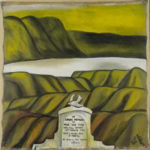 Military Arts
Military Arts
Dear Wee June by Colin McCahon
Here is another poem from my upcoming memoir. For those who used to (or still) go to church, you might recognise the children’s hymn on which it is based:
Sarge, he bids us shine
Sarge, he bids us shine
The lino gleaming bright.
Like a candelabra glinting in the night.
In this world of olive-green, we must shine,
You with your rags old,
And I with mine.
Sarge, he bids us shine, first of all for him.
Well he sees and knows if our brass is dim.
He looks us over to make sure we shine,
You with your rags old,
And I with mine.
Sarge, he bids us shine our boots brightly black.
Many kinds of sloth and slackness slide us back.
Dust and dirt and grime take away our shine,
You with your rags old,
And I with mine.
Sarge, he bids us buff as we work for him.
Chiding those who are slow
To rub away the dim.
He will ever help us as we shine,
You with your rags old,
And I with mine.
Answer to May’s Buzzer Time question
The three RF Cadet School staff who were All Blacks were:
- Tiny (Stan) Hill, RNZA, SSM 1963-65
- Sandy McNicol, RNZAEC, Instructor Education Wing 1970-71
- George Skudder, RNZIR, OC B Coy and School 2i/c 1982-83
